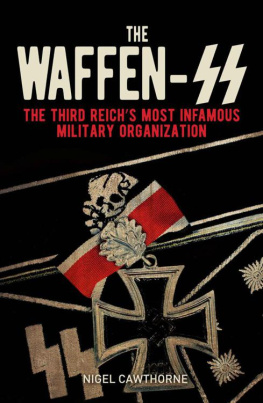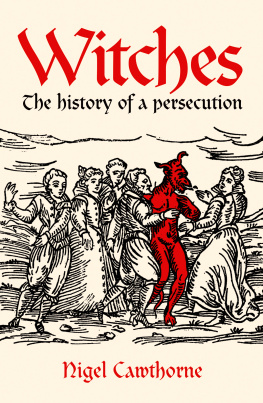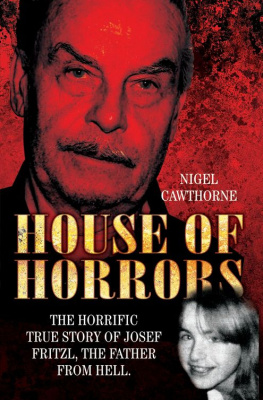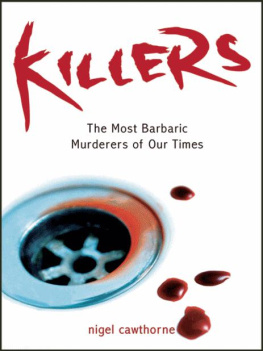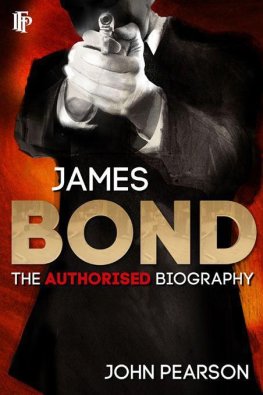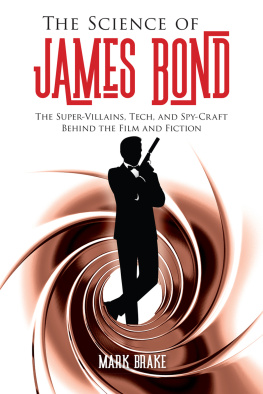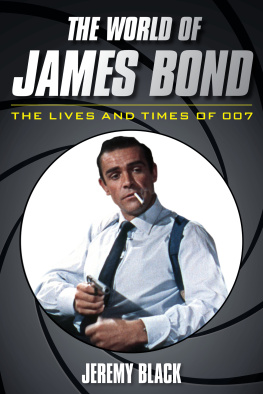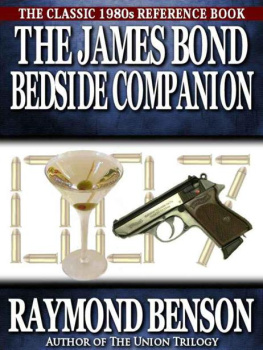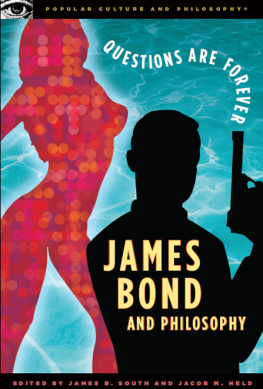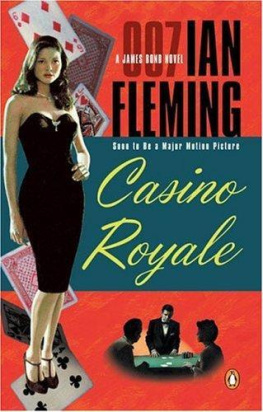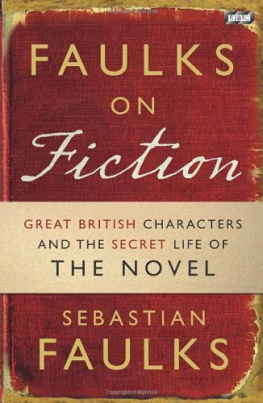Nigel Cawthorne is the author of Military Commanders and Vietnam A War Lost and Won. His writing has appeared in over a hundred and fifty newspapers, magazines and partworks from the Sun to the Financial Times, and from Flatbush Life to The New York Tribune. He lives in Chatham, Kent.
Recent titles in the series
A Brief History of Roman Britain
Joan P. Alcock
A Brief History of the Private Life of Elizabeth II
Michael Paterson
A Brief History of France
Cecil Jenkins
A Brief History of Slavery
Jeremy Black
A Brief History of Sherlock Holmes
Nigel Cawthorne
A Brief Guide to Angels and Demons
Sarah Bartlett
A Brief History of How the Industrial Revolution Changed the World
Thomas Crump
A Brief History of King Arthur
Mike Ashley
A Brief History of the Universe
J. P. McEvoy
A Brief Guide to Secret Religions
David Barrett
His Finest Hour: A Brief Life of Winston Churchill
Christopher Catherwood
A Brief History of Witchcraft
Lois Martin

Constable & Robinson Ltd
5556 Russell Square
London WC1B 4HP
www.constablerobinson.com
First published in the UK by Robinson,
an imprint of Constable & Robinson Ltd, 2012
Copyright Nigel Cawthorne, 2012
The right of Nigel Cawthorne be identified as the author of this work has been asserted by him in accordance with the Copyright, Designs and Patents Act 1988.
All rights reserved. This book is sold subject to the condition that it shall not, by way of trade or otherwise, be lent, re-sold, hired out or otherwise circulated in any form of binding or cover other than that in which it is published and without a similar condition including this condition being imposed on the subsequent purchaser.
A copy of the British Library Cataloguing in
Publication data is available from the British Library.
ISBN: 978-1-84901-507-3
eISBN: 978-1-84901-829-6
Printed and bound in the UK
1 3 5 7 9 10 8 6 4 2
First published in the United States in 2012 by Running Press Book Publishers,
A Member of the Perseus Books Group
All rights reserved under the Pan-American and International
Copyright Conventions
This book may not be reproduced in whole or in part, in any form or by any means, electronic or mechanical, including photocopying, recording, or by any information storage and retrieval system now known or hereafter invented, without written permission from the publisher.
Books published by Running Press are available at special discounts for bulk purchases in the United States by corporations, institutions, and other organizations. For more information, please contact the Special Markets Department at the Perseus Books Group, 2300 Chestnut Street, Suite 200, Philadelphia, PA 19103, or call (800) 810-4145, ext. 5000, or e-mail .
US ISBN 978-0-7624-4628-5
US Library of Congress Control Number: 2011942358
9 8 7 6 5 4 3 2 1
Digit on the right indicates the number of this printing
Running Press Book Publishers
2300 Chestnut Street
Philadelphia, PA 19103-4371
Visit us on the web!
www.runningpress.com
Printed and bound in the UK
Contents
Introduction
In the 1950s, Britain was a dowdy place, still recovering from World War II. With Dwight D. Eisenhower in the White House, America was at its most conformist. Then along came a hero like no other. He was definitely on the side of the good guys, but he drank and smoked, and there is no indication that he ever went to church. Even in a foxhole, he was not a man who would say a prayer. The only vespers he knew were a cocktail he had named after his latest sexual conquest.
Bond bedded beautiful women who surrendered without a struggle. He drove fast cars and visited exotic places. He saw off a series of powerful villains and, whatever happened, James Bond could cope with the situation. For me, as a young lad, this was a revelation. Ian Fleming described his James Bond books as the pillow of fantasy of an adolescent mind. They certainly were for me.
Although Bond had been through the war, he did not talk about it. I had already noted in my own family that those who talked about what they had done in the war had not done anything important. Those who remained silent, I discovered, had faced real danger and wanted to forget about it. But more importantly, Bond was part of the new generation the generation of Elvis and soon the Beatles and John F. Kennedy.
Indeed, when Bond first came to the screen in 1962 with Dr No, he wore the same sharp suits as the Kennedys. Whats more, JFK was a fan. Despite actor Sean Connerys strong Scottish accent, Bonds persona remained curiously transatlantic. In later movies, he is equally at home in the US and the UK. But who can forget the scene when Ursula Andress emerges from the sea? It is a seminal moment in cinema history.
While the Bond of the books is vulnerable, often injured, prey to nerves, even afraid, and kills sparingly, in the films he is fearless, barely even bleeds, suffers no psychological misgivings, and slaughters on an industrial scale. Yet the two Bonds are the same tough, resourceful, stylish, sardonic, well-brought-up man of-the-world that I, even in my late middle age, seek to emulate not altogether successfully, it has to be said.
Fleming said that his James Bond books were autobiographical. There are indeed similarities between Fleming and the Bond of the novels both went to Eton; both saw wartime service in the Royal Navy. Fleming had an inside knowledge of espionage, having served in Naval Intelligence, where he liaised with the Special Operations Executive and MI6, the same Special Intelligence Service that Bond worked for. He knew about the Soviet Union, visiting as a journalist to cover the Metro-Vickers spy trial in 1933 and returning in 1939. He also knew about armed assaults, at command level, from his time with 30 Assault Unit during World War II. He even carried a Beretta. But Fleming never had a licence to kill let alone the ability to perform James Bonds death-defying feats.
While Fleming did share Bonds love of drinking, fast cars and women, the James Bond of the novels and the films was not Ian Fleming of Goldeneye, his Jamaican home. Bond was a fantasy born out of Britains post-war austerity, but he went on to become a fantasy the whole word shares.
During Ian Flemings lifetime, his books sold over thirty million copies. All are still in print and more Bond books have been written by other authors since Flemings death in 1964. The Bond films are the highest grossing franchise in Hollywoods history. It is estimated that half the population of the world has seen at least one Bond movie as the legendary Cold War warrior now takes on the villains of the post-Cold War world.
Now that another Bond movie has just come to the screen it is, perhaps, a good time to go back and take a good hard look at the character and his creator, and see what Bond tells us about ourselves.
While writing this, I am, of course, sipping a dry martini, shaken, not stirred.
Nigel Cawthorne
Bloomsbury, 2011
1. Ian Fleming
Of his James Bond books, Ian Fleming once said: Everything I write has a precedent in truth. So for the truth about James Bond we should first look at the life of Ian Fleming, the wellspring of 007s creation.
Like James Bond, Fleming was born to a Scottish family. His grandfather, Robert Fleming, was from a poor background in Dundee. As a clerk working in a textile company, he seized the opportunity to represent his firm in the United States. In the aftermath of the Civil War, America was desperately short of capital, so Robert Fleming set up a pioneering investment trust that took the savings of thrifty Dundonians and invested them in American railroads with yields twice that of the stock markets in Edinburgh or London. He was in his twenties when he made his first big railroad deal in 1873.
Next page

